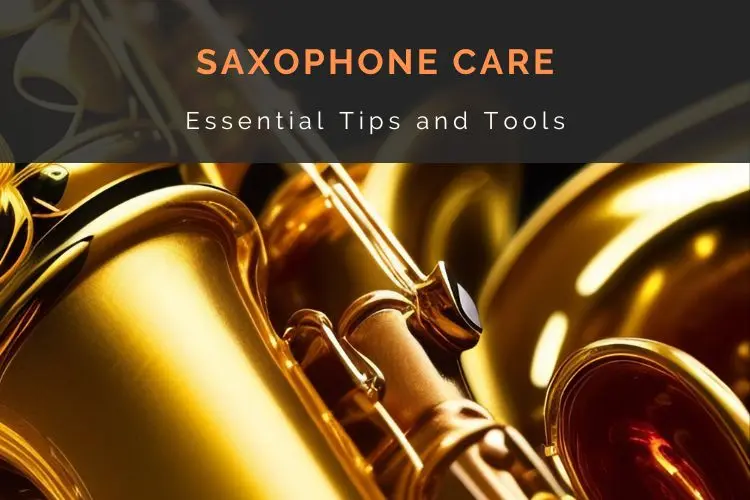Saxophones are very intricate devices. If you look at the instrument, it is very complex, almost like a machine.
Every single key has a leather pad that can be worn out, as well as a spring that can wear out. Many of the keys have cork or felt that can wear out, as well as cork on the neck where the mouthpiece goes.
In this article, I will address why saxophone care and maintenance are so important. Also, answer relevant questions like:
- When to clean your saxophone, and the best way to do it?
- What tools to use for cleaning it
- When to take the sax to a professional repairman and the costs for doing so
- Common fixes that you can do yourself
List of essential saxophone cleaning tools
Why do you clean a saxophone?
There are a number of results that can occur if the saxophone is not cleaned regularly. The most important are the pads.
Every time you play, moisture from your saliva arrives inside the saxophone. The main effect of this is on the leather pads on the inside of the sax. Like all leather, if they are in contact with water, they become stiff and dried up, and are no longer responsive in sealing air from leaking from the saxophone.
If the saxophone starts leaking, eventually it will basically become unplayable.
Also, the mouthpiece and neck are the areas that get dirty the quickest. While there are no pads except the octave key pad, these areas can get clogged if the player doesn’t clean them regularly.
Also, another consideration is that any kind of residue can affect the seal between the reed and the mouthpiece. This is not common, but it is possible. As well, while not affecting playability, if the lacquer is uncleaned, this can result in permanent blemishes on the instrument.

Basic saxophone care and maintenance
Here are the basics of sax care and maintenance you should follow, including which tools will help you the most.
Cleaning swabs and sax pad savers
Arguably the most common tool for saxophone care is the swab. This is a piece of cloth that you run through the body of the saxophone after you have played it. Make sure to run it through the neck as well. Do this after every time you play.
Generally, it’s recommended to avoid using pad savers if you can, although if you do use them, make sure to not leave the pad saver in the saxophone.
Sax pad savers (and swabs)
What are saxophone pad savers? Do they work?
Read our guide where I explain what they are and how they compare to sax swabs.
Cleaning the sax mouthpiece
As well, make sure to clean the mouthpiece with water after you play, or every few days once a week. This will keep it from building up any residue inside, and also keep the table (the flat part of the mouthpiece) clean to allow for a good seal with the reed. Use lukewarm water to clean, possibly with a brush or a piece of paper.
It’s better not to use hot water, and above all, do not put the mouthpiece in the dishwasher. Many mouthpieces are made of plastic or hard rubber, and the dishwasher’s high temperatures will alter the shape of the mouthpiece.
Cleaning the body of the saxophone
Contrary to brass instruments like trumpets, it is not a good idea to wash the body of the saxophone. This is because the saxophone has leather pads that react very poorly to water.
Water is generally not a good thing for saxophones. The mouthpiece can be washed with water. The neck can be washed with water as well, but if the neck is washed, make sure to cover the octave key pad at the top.
This can be done with your finger, or by covering it using tape. Another way to clean the neck is to use a piece of paper or a neck pad saver to push through it.
The use of oil
Unlike a brass instrument, oil is not a normal part of the workings of the saxophone, however, it is good to add a little valve or key oil at the joints where the rods/posts come together with the keys. Just use a few drops, and if possible, move the key back and forth. In general, the pads should not need any oil.
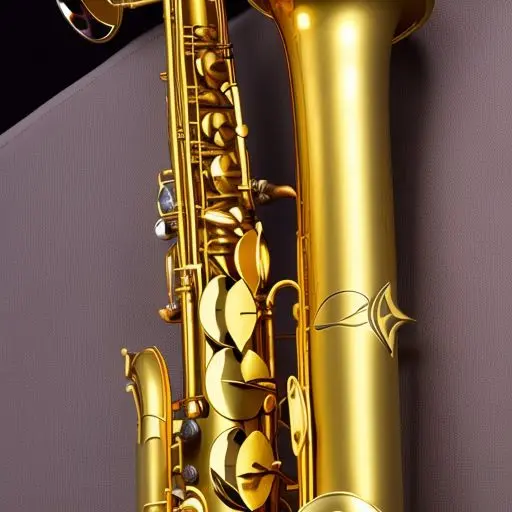
Lacquer Care
The lacquer won’t directly affect the playing of the saxophone, but it helps with keeping the lacquer looking nice. If the lacquer isn’t cleaned, it can result in permanent smudges on the saxophone.
The lacquer of the saxophone can be cleaned with a polishing cloth, to keep smudges off it. If needed, a little water or polishing liquid can be used. If water is used, do not let the water touch the pads.
As well, try to avoid dust accumulating on the sax. Try to use a tool like a key brush to get in between the springs and the rods, and clean off any dust.
Cork grease
Cork grease is necessary for avoiding tear on the cork. Every time the mouthpiece is attached to the neck, this can wear on the cork.
Without any cork grease, it will be very difficult to get the mouthpiece on the neck, but also, it won’t take long for the cork to become damaged and need to be replaced. I put cork grease on the cork every day before I play, and my cork has lasted me years without needing to be replaced.
The use of cork grease
Should you use cork grease for saxophones? Are there any substitutes for it? And how would you apply it? Check our guide where I answer FAQs related to saxophone cork grease
Repair costs
Saxophone repair costs will depend on what is wrong with the instrument. The cost of pad replacements can be expensive. If the sax is not maintained, it will eventually require an overhaul, which is the replacement of all the pads on the saxophone.
This can range from $300 to up to $1000 depending on the kind of saxophone you have. If you have a cheap saxophone, this is more than the cost of the instrument. This is a great motivator to keep the instrument working properly.
However, pads will eventually wear out. But if you take care of your sax they can last a long time. My sax has been five years without a repair, and it still plays great.
General saxophone cleaning tools
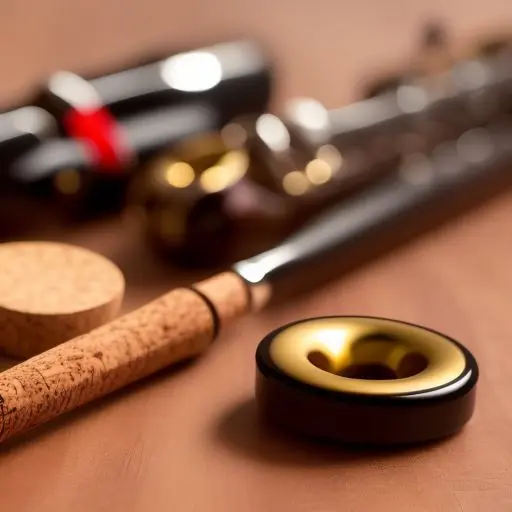
Here is a go-to list of general saxophone cleaning tools you can use for correctly taking care of and maintaining your instrument:
Some of those are normally great gifts to offer to sax players as they are really useful for keeping their instruments in the best shape possible.
Important Note
It is important that you do not try to clean the saxophone with equipment that is not listed here. Many things that may be used to clean something else are not designed for the saxophone, and you can end up damaging the saxophone. If you are unsure how to clean the saxophone, take it to a professional repairman.
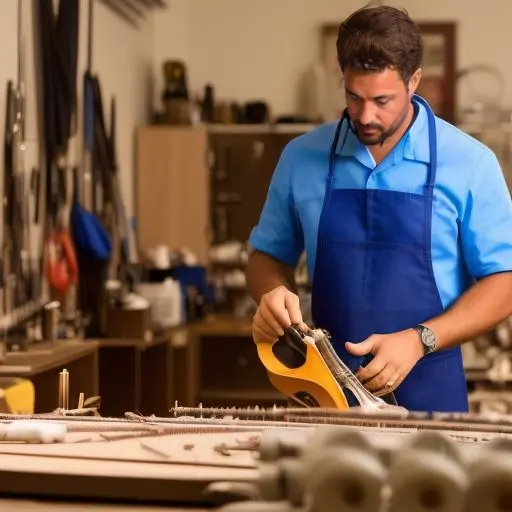
Some common fixes that you can do yourself
Sticky keys
Use a one-dollar bill or cleaning paper/powder paper underneath the pad. Insert the paper while the pad is open, close the pad several times, then open the pad again and remove the paper or dollar bill.
Broken spring
If you have a key that won’t stay shut because the spring is broken, often you can use a rubber band to hold the key shut. This isn’t a permanent fix, but it can be effective for a long time.
Rusty joints/keys
Use WD-40 to lubricate rusty areas. Make sure to avoid extensive contact with the leather pads.
Lost/compressed felt
If the felt for one of the keys falls off, a quick fix is to just put a piece of paper where the felt was. This won’t work forever, but it’s surprisingly effective.
Worn out cork
Use the plumber’s tape to wrap around the cork. This way, the mouthpiece can be attached without any air leaking. However, eventually, you should replace the cork.
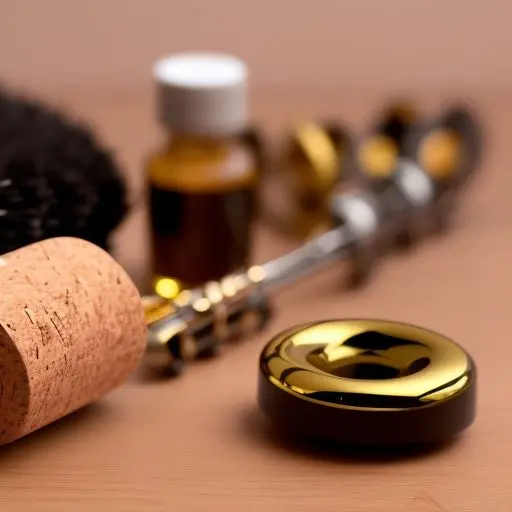
Conclusion on sax maintenance and care
The saxophone is quite a complex instrument. There are an incredible amount of things that can go wrong at any moment, arguably more than some other instruments.
To avoid this, make sure you take good care of it at all times. Make sure you stay away from using equipment not designed to clean saxophones such as solvents, as this can damage the saxophone.
If you are unsure, take the sax to a professional repairman.
If you are in a jam and need the sax to work before you can see a repairman, check out my tips on easy fixes you can do yourself that won’t hurt the instrument. As long as you take good care of your saxophone, it can last a long time and be quite reliable.
Frequently asked questions about sax care and maintenance
How often do you need to clean a saxophone?
It’s a good idea to clean your sax at least once a week, or more frequently if you play it heavily. It’s also important to dry the sax thoroughly after each use to prevent the build-up of moisture, which can lead to corrosion. It’s worth noting that the specific cleaning frequency will depend on how often you play the sax, as well as the conditions in which it is used.
How often should I oil my saxophone?
It’s generally recommended to oil your sax once every two to six months, depending on how frequently you play. It’s important to only use a few drops of oil at the joints where the rods/posts come together with the keys, and to move the key back and forth to help distribute the oil. You should not need to oil the pads of the saxophone.
How do you maintain a saxophone?
To maintain a saxophone, it’s important to regularly clean and oil the instrument, as well as have it serviced by a professional if needed. You should also handle the sax with care, avoiding dropping or bumping it, and storing it in a safe, dry place when not in use.
Do saxophones need to be serviced?
Yes, saxophones do need to be serviced from time to time in order to ensure they are functioning properly and playing at their best. This may involve cleaning and oiling the instrument, as well as replacing worn parts or making repairs as needed.

Author: Cooper White
- Cooper is a Multi-Instrumentalist, with vast knowledge and experience performing with Sax, Flute, Clarinet, Keyboard, and Blues Harmonica.
- With a Bachelor’s Degree from the Berklee College of Music in Boston and studies in Classical Performance at the Lionel Hampton School of Music, he has also more than 10 years of performing professionally, whether while road touring in the U.S. or playing on different cruise ships.
- He is also an entertainer with his shows, as well as a producer of his music and others. Whenever he is not performing, he teaches individual online classes. He mostly plays Jazz, Classical and Popular music.
